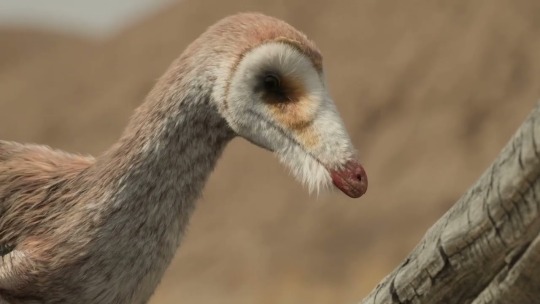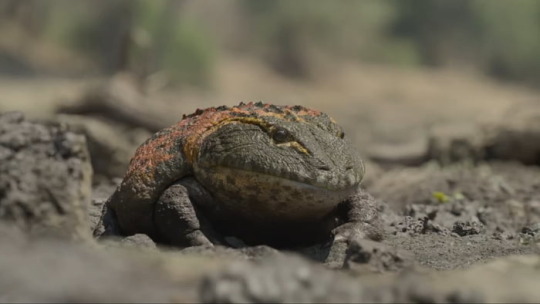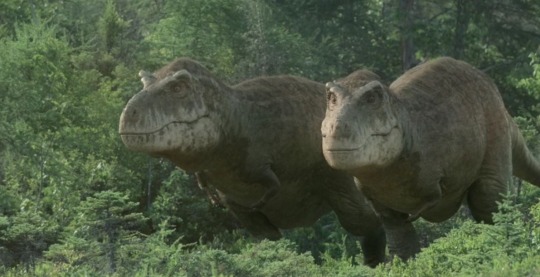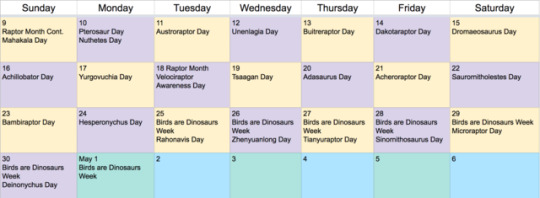#nemegt project
Text
Time for a quick big-brain thought





I know that I’ve made an entire hypothetical scenario for how a third PHP season would go last year, along with how the series itself hasn’t mentioned in any major announcements as of late, but what if this hypothetical third season had a major theme with its episodes?
As in, instead of using habitats as the themes, why not go with entire locales instead? Maybe this could be the show going back to some of its most famous settings before closing things out, but I feel like having future episodes focus on an entire location instead of a single biome in general could be an interesting way to deal with running out of compatible habitats. Hell, it could be a good way to not only introduce new species, but also bring back certain animals from past episodes. I know this is a little bit far fetched, but hear me out.
Nemegt (Basically the Nemegt Formation and the surrounding area)
Old Species- Tarbosaurus, Mononykus, Deinocheirus, Tarchia, Prenocephale, Barsboldia
New Species- Gallimimus, Udanoceratops, Saurolophus, Conchoraptor, Adasaurus, Brodavis
Patagonia (The southern part of South America, with places like the Allen, La Colonia, and Cerro Fortaleza Formations being found there. Areas like Chile could also fit)
Old Species- Carnotaurus, Dreadnoughtus, Austroraptor, Secernosaurus, Mortuneria (if we wanna continue with the idea of them being South American residents)
New Species- Maip, Stegouros, Aerotitan, Gondwanatherium, Sektensaurus, Noasaurus
Madagascar (Basically what it says on the tin)
Old Species- Majungasaurus, Rapetosaurus, Beelzebufo, Simosuchus, Adalatherium, Masiakasaurus, Madtsoia
New Species- Facatakely, Mahajangasuchus, Sahonachelys, Rahonavis, Vintana
Tethys (The European archipelago and surrounding sea, with places like Hateg Island, France, and even a small bit of Morocco being examples)
Old Species- Hatzegopteryx, Zalmoxes, Mosasaurus, Telmatosaurus, Barbaridactylus, Diplomoceras
New Species- Squalicorax, Ampelosaurus, Ocepechelon, Gavialimimus, Gargantuavis, Rhabdodon
Laramidia (Yes, I am aware that this could be like “North America” again, but with place like Hell Creek, Prince Creek, Ojo Alamo, and even parts of the inland sea that was still present at the time, there’s plenty of material to work with, even moreso than NA)
Old Species- T. Rex, Triceratops, Quetzalcoatlus, Alamosaurus, Edmontosaurus, Pachycephalosaurus, Pectinidon, Pachyrhinosaurus, Nanuqsaurus, Prognathodon, Hesperornis, Xiphactinus
New Species- Ankylosaurus, Anzu, Habrosaurus, Lonchidion, Thescelosaurus, Borealosuchus, Basilemys, Didelphodon, Bravoceratops, Bonnerichthys, Hydrotherosaurus
Is this a rather odd and ridiculous idea for a third PHP season that might not happen? Yes, yes it is. But, like with my of my other ideas and projects on here, it’s one that I wanna share to get input on.
3 notes
·
View notes
Text

How long has it been since I last drew these guys? Feels like years.
Anyway, here's some shanties from a project that I still haven't named... Pebble is the bull of the herd, Song is a young adult cow and Journey is the herd's leader.
44 notes
·
View notes
Photo

Here it is! The rest of Raptor Month!
As always, the 18th is Velociraptor Awareness Day, in which we remember what Velociraptor is actually like, rather than the media interpretation thereof
And the last week of April is Birds are Dinosaurs week, starting on the Birthday of the world’s Biggest BANDit (aka a scientist who clings to the disproven hypothesis that birds didn’t descend from dinosaurs), So what better than to talk about the dinosaurs that emphasized the bird-dinosaur link?!
We’ll start off with Mahakala on the 9th, the most early derived raptor known
Then we have Nuthetes on the 10th, which isn’t well known, but is from England, showing the European spread of this group!
Then we have Austroraptor on the 11th, the raptor that achieved gigantic size and isn’t shown enough love!
On the 12th we have Unenlagia day, another of the strange skinny raptor group, and the one that gave it it’s name!
On the 13th? Buitreraptor day, another Unenalgiian, a very smol one!
On the 14th we have Dakotaraptor day, because we can’t ignore a raptor that has captured the imaginations of many.
On the 15th, we have Dromaeosaurus day, and even though it’s not well known, we should pay attention to the one that gave it’s name to the whole shebang!
Next, on the 16th, is Achillobator day, the large raptor from Asia!
On the 17th it’s Yurgovuchia day, a smaller raptor known from Utah and closely related to big ones like Achillobator and Utahraptor!
On the 18th it’s VELOCIRAPTOR AWARENESS DAY, one of the biggest days in the ADADian calendar! I have no idea what I’ll be doing for it!
But Raptor Month surges on, and on the 19th It’s Tsaagan day, the raptor very similar than Velociraptor who deserves soooo much love.
On the 20th it’s Adasaurus day, the raptor from the Nemegt Formation!
We then go on to the 21st with Acheroraptor day, the OTHER raptor from Hell Creek!
On the 22nd it’s Saurornitholestes day, highlighting the most common small theropod from Dinosaur Provincial Park!
Then we have Bambiraptor on the 23rd, a raptor only described (though adults are known) from juvenile specimens!
Next we have Hesperornyhcus on the 24th, a Microraptorian from North America!
On the 25th we start Birds are Dinosaurs Week, and we start out with Rahonavis, an animal that has jumped around in classification between bird and raptor!
On the 26th we look at Zhenyuanlong, a Velociraptor-sized raptor with large wings preserved in its fossil!
Next up, on the 27th we have Tianyuraptor day, a raptor that may show a transition between the mainstream raptors and the strange forms in South America!
On the 28th we have Sinornithosaurus day, a raptor known with feather impressions in it’s fossil (and it wasn’t venomous, sorry gents)
On the 29th it’s Microraptor day, the day for the (first known) raptor with four wings!
And on the 30th it’s Deinonychus day, the day for the raptor who helped pave the way for understanding birds as dinosaurs!
And of course the entire week from the 25th to the 1st will also feature a lot of bird content for Birds are Dinosaurs Week!
Each day I’ll do a little shout out to the featured raptor, and I’ll reblog art tagged #RaptorMonth! I invite people to talk about raptors and share their thoughts about this excellent group of animals. Write stories, share hypotheses, talk about ontogeny, growth, behavior, all of it! There are so many exciting things to be done this month as we talk about raptors, birds, and everything in between.
Be sure to keep promoting the Utahraptor Block Project so we can keep raising funds throughout the month as we talk about all raptors! And be sure to use the hashtag #RaptorMonth!
#raptormonth#raptors#dinosaurs#birds#raptor month#utahraptorweek#utahraptor week#utahraptor#birds are dinosaurs#announcement#palaeoblr#birblr
166 notes
·
View notes
Text
Wikipedia article of the day for November 8, 2018
The Wikipedia article of the day for November 8, 2018 is Nemegtomaia.
Nemegtomaia, a genus of feathered oviraptorid dinosaur, lived in what is now Mongolia during the Late Cretaceous, about 70 million years ago. The first specimen was found in the Nemegt Basin in 1996, and became the basis of the new genus and species N. barsboldi in 2004, honouring the palaeontologist Rinchen Barsbold. Two more specimens were found in 2007. Nemegtomaia is estimated to have been around 2 m (7 ft) in length and to have weighed 40 kg (88 lb). It had a deep, narrow, and short skull, with an arched crest. It was toothless, with a short snout, a parrot-like beak, and a pair of tooth-like projections on its palate. The first of its three fingers bore a strong claw. One specimen was found on top of a fossilised nest of eggs that were probably arranged in a ring, with streams nearby, judging from stratigraphic data. This individual may have been protecting its eggs by covering them with its tail and wing feathers. via https://cutslicedanddiced.wordpress.com/2018/01/24/how-to-prevent-food-from-going-to-waste
0 notes
Link
Nemegtomaia, a genus of feathered oviraptorid dinosaur, lived in what is now Mongolia during the Late Cretaceous, about 70 million years ago. The first specimen was found in the Nemegt Basin in 1996, and became the basis of the new genus and species N. barsboldi in 2004, honouring the palaeontologist Rinchen Barsbold. Two more specimens were found in 2007. Nemegtomaia is estimated to have been around 2 m (7 ft) in length and to have weighed 40 kg (88 lb). It had a deep, narrow, and short skull, with an arched crest. It was toothless, with a short snout, a parrot-like beak, and a pair of tooth-like projections on its palate. The first of its three fingers bore a strong claw. One specimen was found on top of a fossilised nest of eggs that were probably arranged in a ring, with streams nearby, judging from stratigraphic data. This individual may have been protecting its eggs by covering them with its tail and wing feathers.
0 notes
Photo

The Wikipedia article of the day for November 8, 2018 is Nemegtomaia.
Nemegtomaia, a genus of feathered oviraptorid dinosaur, lived in what is now Mongolia during the Late Cretaceous, about 70 million years ago. The first specimen was found in the Nemegt Basin in 1996, and became the basis of the new genus and species N. barsboldi in 2004, honouring the palaeontologist Rinchen Barsbold. Two more specimens were found in 2007. Nemegtomaia is estimated to have been around 2 m (7 ft) in length and to have weighed 40 kg (88 lb). It had a deep, narrow, and short skull, with an arched crest. It was toothless, with a short snout, a parrot-like beak, and a pair of tooth-like projections on its palate. The first of its three fingers bore a strong claw. One specimen was found on top of a fossilised nest of eggs that were probably arranged in a ring, with streams nearby, judging from stratigraphic data. This individual may have been protecting its eggs by covering them with its tail and wing feathers.
0 notes